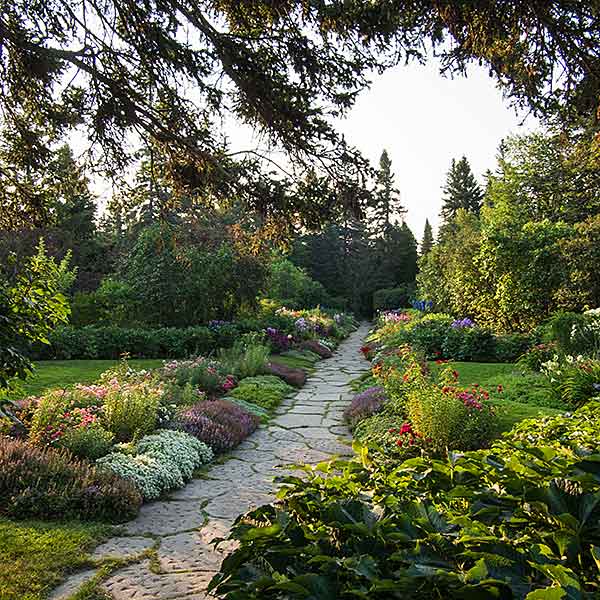I live on the west coast of Sweden, which is roughly classified as USDA plant hardiness zone 7a. For this country this is a fortunate growing zone. The northern parts of Sweden belong in USDA zones 3 and 4. Calling them challenging, even unfortunate, garden areas is probably no exaggeration. Which actually makes them rather interesting. Because there are gardens there, and reading about how people go about achieving them, and maintaining them, is quite fascinating.

Out of general interest I regularly read a Swedish magazine called Trädgård Norr (direct translation Garden North) which has a sole focus on gardens in the Far North. It seems working with south facing walls and microclimates are two popular ways of making plants thrive. Needless to say, gardeners having picked plants in the first place that stands a chance in the tough climate.

Canada is a country with similar hardiness zones as Sweden. Today I came across an interesting article about Reford Gardens/Jardins de Metis, located 300 km north-east of Quebec City. This garden is one of the most northern in North America. I understand this is roughly USDA zone 3.

The Reford Garden started out with a lady called Elsie Reford (1872-1967), whom in the summer of 1926 began converting her fishing camp on the Métis River into gardens. The development of the 20-acre site took about ten years. In an isolated part of the country with difficult weather conditions, her project was a major achievement. To say the least. Starting out from more or less scratch, she relied on local resources such as rocks, used leaves from nearby farms to create compost, and had help from local farmers and other labourers. She trained staff to become specialist gardeners. Together they managed to establish rare species such as azaleas and blue poppies from Tibet.
This year the garden host the 23rd edition of the International Garden Festival. I like the description of this festival and the emphasis on contemporary and creating a dialogue between modernity and history. Just what garden design development needs.








